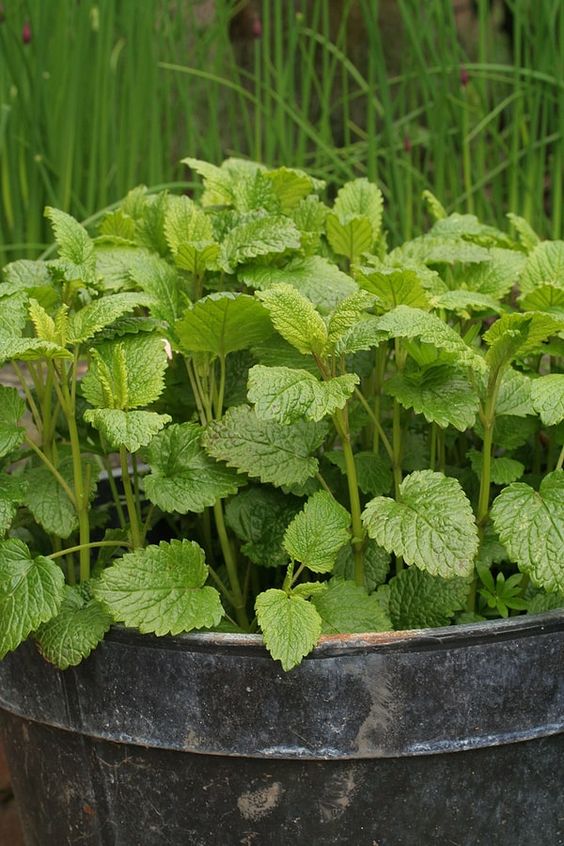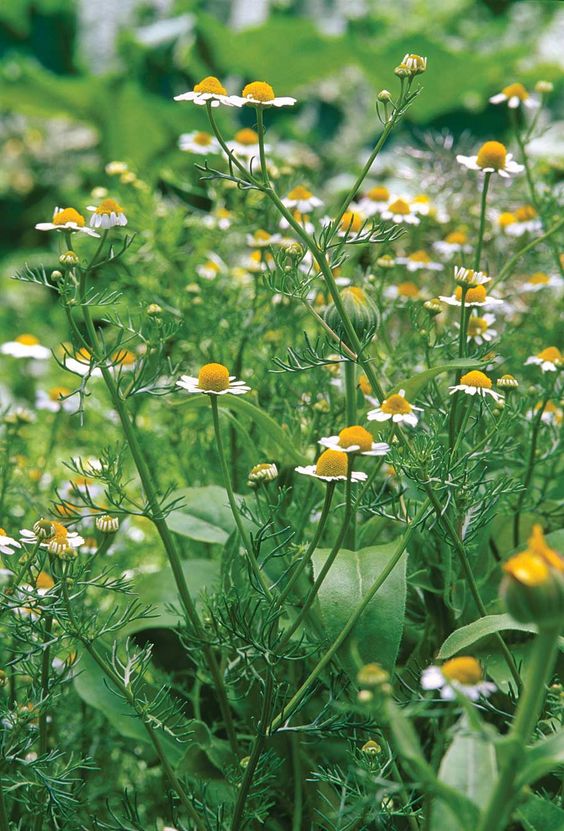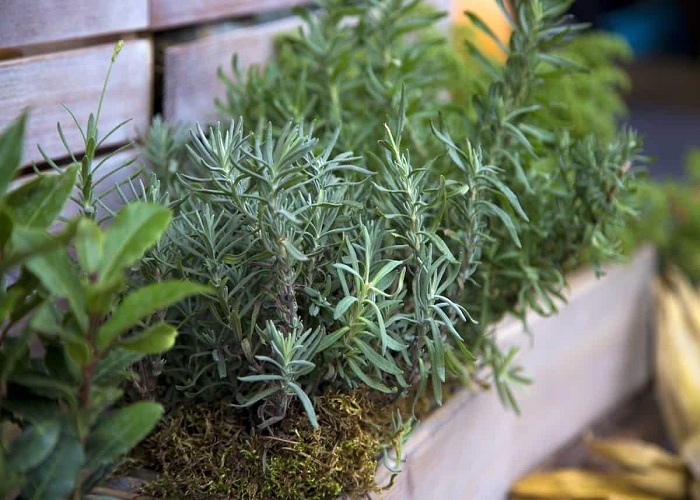Growing perennial herbs is a great alternative to constantly investing time and money into starting new herb gardens each season.
These ten low-maintenance herbs will provide you with harvests for many years if you treat them well.
Lavender
Growing advice
Lavender thrives in sunny locations with ample drainage. Don’t overwater it; instead, let the soil dry out between heavy waterings.
Harvesting
Lavender should be picked when the buds have formed but before the blooms have opened. This is the best way to ensure that your flowers and plants bloom and smell their best.
Gather a bundle of lavender stalks, hold them together at the base, then snip off the tops with some scissors. Hang the bundle upside down in a warm, dry, and out of the sun location.
The lavender is ready to use after about two to four weeks. Shake flowers and leaves into a sealed container gently.
Uses
- Lavender, whether fresh or dried, adds color and flavor to many foods and is especially nice on homemade ice cream, bread, and salad.
- For better sleep, try tucking a sachet of dried lavender made from a lightweight fabric under your pillow.
- To make a refreshing room spray, combine lavender, peppermint essential oil, and water in a spray bottle.

Cilantro
Growing advice
Cilantro thrives in warm, sunny locations with evenly moist soil that drains properly. To avoid the plants from bolting too quickly and producing seeds too soon, clip the tops off of young cilantro plants to encourage them to focus on producing leaves instead.
Harvesting
When dried, cilantro loses its flavor and is no longer desirable, unlike lavender, which retains its aroma and taste for quite some time after being picked.
During the growing season, harvest the top growth and use it straight away.
Uses
- Cilantro, in its fresh form, is a superb addition to many kinds of salsa. Create some mango salsa for a change of pace.
- Combine cilantro, butter, and lemon juice for a delightful cilantro butter to use as a tasty complement to cooked veggies.
- Add a few cilantro stems to your olive oil and shake to infuse the oil for a flavorful marinade or salad dressing.

Oregano
Growing advice
Oregano is a great addition to any vegetable garden because it doesn’t take over the space and it enhances the flavor of the vegetables.
Plant in a spot that gets lots of sun and has good drainage. Regular pruning promotes lush, healthy growth.
Harvesting
Take advantage of the peak flavor by picking right before the flower buds open.
Cut with sharp shears or scissors to within an inch of a leaf clump. Make bundles, then hang them up somewhere dry and dark to dry.
Ensure that the bundles are protected from dust and falling leaves by enclosing them in a perforated paper bag.
Uses
- Oregano is a must-have for any sauce or pizza you make at home, and it can be used in a wide variety of other dishes as well.
- To encourage healthy plant growth and attract beneficial insects, plant a border of oregano around vegetable gardens. This is especially important for cabbage family products.

Chives
Growing advice
Keep in mind that chives will rapidly spread if allowed to go to seed before you plant them.
It’s best to grow plants in full sun and rich nutritious soil that stays moist yet drains quickly.
Amending the soil may necessitate the incorporation of organic matter such as compost.
Harvesting
You can pick your crop 60 days after planting. Cut the plant back to where it is only a couple of inches above the ground.
Fresh or frozen chives can be stored in an airtight container. Gather your harvest three to four times the first year, then once a month the following two years.
Uses
- Fresh chives are a great topping for a baked potato.
- Combine with eggs or use in omelets.
- The aromatic topping is perfect for the fish.

Rosemary
Growing advice
If you want your rosemary to thrive, give it full sun and a sandy, well-drained soil.
Rosemary plants quickly reach a height of 4 feet and a width of 4 feet, so they’ll need plenty of room to spread out.
Maintain a regular pruning schedule and a moist but not soggy soil.
Harvesting
Once established, trim rosemary weekly and use immediately. If you prune your plants at a rate of every two or three inches, you’ll encourage strong new growth and a bushier plant overall.
If you want to dry this herb, you should do so when it first begins to bloom, much like you would with lavender.
Uses
- Oil infused with rosemary is wonderful when used as a finishing oil for roasted potatoes or vegetables. Some stalks in the oil bottle will do the trick.
- If you want to sharpen your mind and increase your productivity, try brewing some fresh rosemary into a soothing tea.

Sage
Growing advice
Growing sage from seed requires a sunny location and soil with good drainage. Maintain a consistent moisture level without letting water pool.
If you want more fruit and better flavor, you should prune the woody stems every spring.
Harvesting
In the first season, take only a small amount of the plant, no more than a few inches above where the leaves join. Spread the leaves out on a flat surface to dry, and then use the crumbled leaves as a seasoning.
Uses
- Sage lends tremendous flavor to any meat dish, especially poultry.
- Because of their lovely scent, textured leaves, and vibrant colors, the branches and leaves of this plant are frequently utilized in holiday activities like crafting wreaths and potpourri.
- Smudging with sage leaves is a great way to clean the air and destroy microorganisms in your home.

Lemon Balm
Growing advice
Be very cautious about where you put lemon balm, as it can quickly become invasive once established. It might be best to place it in a raised pot all by itself if you want to limit its spread.
Lemon balm is highly hardy and will bloom in virtually any conditions.
Harvesting
Since it is such a quick growth, you don’t have to worry about over-harvesting lemon balm.
As you need them, pinch off new leaves from the plant as it grows. You may usually get at least two full harvests per year if you cut the plant down to about 2 inches above the soil.
Hang upside down in a dark spot to dry.
Uses
- Make ice cubes out of fresh lemon balm and use them in cold drinks for a unique flavor this summer.
- Make some lemon balm tea, if you can. Put some water and a few leaves in a pot and bring to a boil. Lower the heat and let simmer for 5 minutes then drain out the leaves. Honey can be added if desired.
- Put it to good use by creating tinctures and balms to treat a wide range of conditions. The lemon balm plant has been used for centuries because of its stress-relieving and virus-fighting capabilities.

Roman Chamomile
Growing advice
Planting chamomile in your perennial herb garden will not only bring practical value, but also a splash of vibrant color. Its bright white and yellow blossoms are a welcome departure from the usual green herbs.
Plant chamomile in full sun to partial shade and dry soil for optimal growth in cooler temperatures. Once planted, it requires watering only during extended dry spells.
Harvesting
When collecting chamomile, you’ll be focusing on the flower rather than the leaves, as is the case with most other herbs. Flowers are ready to be cut from their stems when their outer petals are pure white and their cores are a brilliant yellow. Using shears or scissors could make the job simpler.
Store blooms in a large paper bag to dry for at least 2 weeks.
Uses
Crush some flowers and put them in a cup of water on the stove. Bring the water to a boil. Simmer for 5 minutes, then remove chamomile with a strainer. To assist get to sleep faster, mix some honey with a soothing herbal tea and drink it before bed.

Thyme
Growing advice
When tending to thyme, less is more, as with most other herbs.
It does best in hot, sunny locations and requires only regular, deep watering when the soil becomes dry.
Growing thyme from seed can be challenging, so planting a young plant is usually the best bet.
Harvesting
Fresh thyme sprigs can be picked and used at any time during the growing season, from right before the plant flowers all the way through to winter. For later usage, it can be dried or frozen and stored in an airtight container.
To promote even growth and a full, rounded form, regular pruning is essential. After a massive harvest, be sure to leave at least 5 inches of growth.
Uses
- Thyme pairs particularly well with mushrooms, eggplant, tomatoes, fish, chicken, and roast potatoes in many savory meals.
- Thyme-infused spray can help relieve dryness and stimulate healthy hair growth.

Mint
Growing advice
There are various varieties of mint so it is vital to do your study and choose the one that sounds most enticing for your garden and your taste buds.
It is recommended to start mature mint plants instead of seeds. Since it is a robust perennial, it will quickly spread to fill in any empty spots.
Consider putting in a container or a separate herb garden to restrict its growth.
Harvesting
Leaves can be picked as needed, or the plant can be cut down to about an inch above the earth just before it blooms.
Uses
- To offer a fresh, distinctive flavor and aroma, mint can be incorporated into a wide variety of both sweet and savory dishes.
- Combine Greek yogurt and fresh mint leaves.
- Try it in your tea, or make some ice cubes and use them to cool off your drink.
- Blend into salads dressed with a simple vinaigrette.


